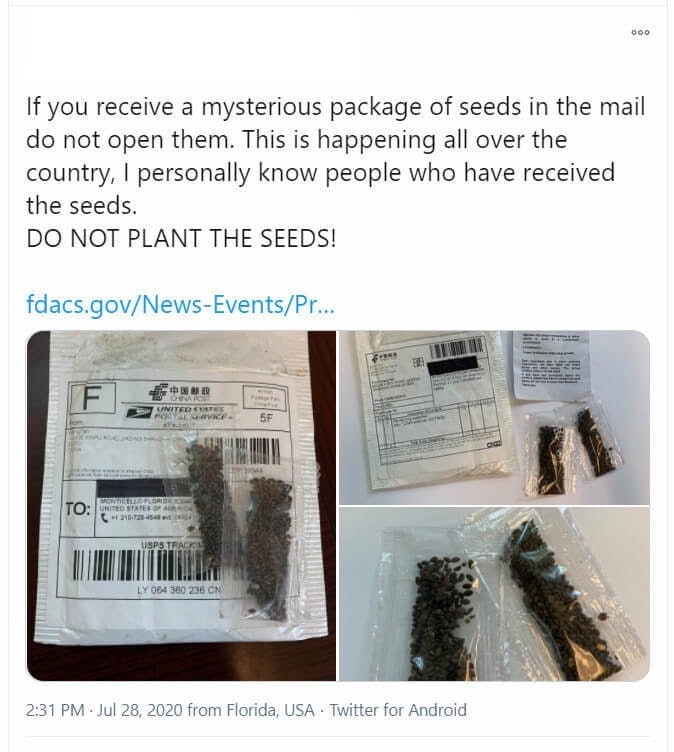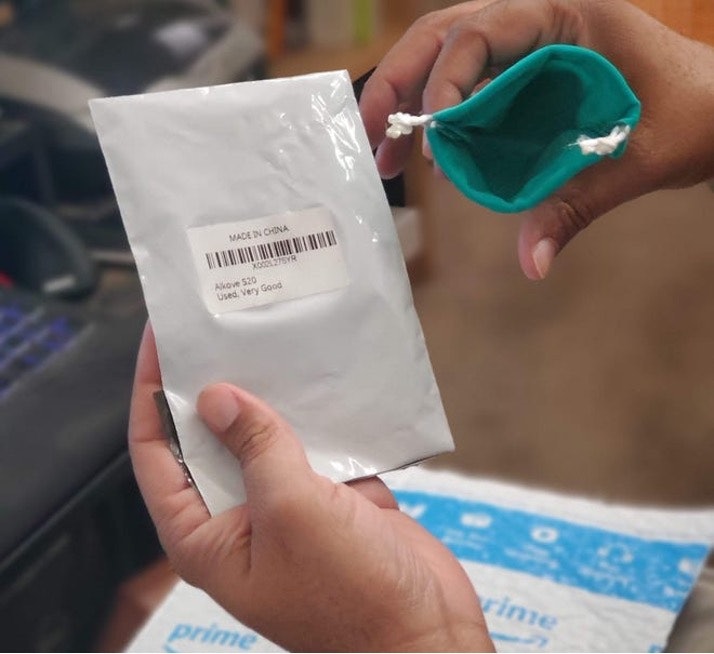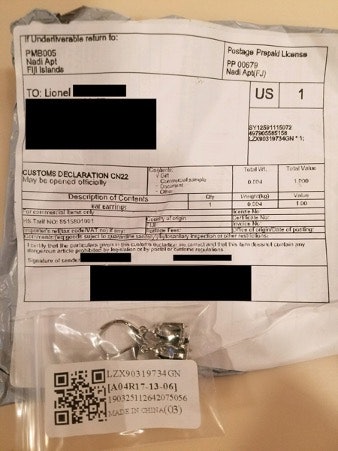- What Is a Brushing Scam?
- How to Beat and Avoid Brushing Scams
- Examples of This Scam
- What to Do if You’ve Fallen for a Brushing Scam
- Frequently Asked Questions
Brushing scams became popular in 2020 during the COVID-19 pandemic when most people were ordering merchandise online. Scammers took advantage of the fact people were used to the familiar sight of packages showing up on their doorstep.
What Is a Brushing Scam?
In this scam, you’ll notice packages arrive, either from Amazon or other companies, that you didn’t order. The companies perpetuating the scam are trying to falsely inflate their sales numbers and online reviews. Here’s how these scams work.
You Receive a Shipment You Didn’t Order
You receive boxes of merchandise you never ordered from either Amazon or another large retailer. It might be an item that’s lightweight and inexpensive to ship, such as seeds or face masks. Or it could be something heavier, such as a humidifier or a Bluetooth speaker.
Company Uses the Fake Order to Boost Ratings
The company posts a fake positive review of the product they sent you to improve their online product ratings, which eventually will help boost their sales. They even use your name to post fake reviews.
This scam is relatively harmless since the goal is to post fake reviews on the product/company, not to steal your information or money. However, it may mean that your information is compromised.
Your Personal Information Is Compromised
Given that one company could find your information online, other companies could also do the same thing. Scammers now have access to your personal information, such as your name, address, and phone number, which they could use for numerous fraudulent activities.
They also may have other sensitive information on you, which may have come from either a data breach or a marketer. They could use that information to access your bank accounts, set up new ones, or create fake accounts on social media in your name.
How to Beat and Avoid Brushing Scams
Brushing scams can target anyone whose personal information may be available online—which is most of us. Although receiving free stuff generally isn’t a problem, you could be at risk of scammers using your information for other fraudulent purposes. Here’s how to avoid brushing scams:
- Request to have your name removed from online databases: You can request to have your name removed from the United States Phone Book and White Pages. This makes it less likely that scammers will be able to find your contact information online.
- Check other sites for your personal information: Check to see if any of your details, including your location, phone number, and email address, are exposed on other sites such as:
- Google yourself regularly: While you’re waiting for those sites to remove your records—it could take months—Google your name and location frequently to see what pops up. If you find the information available on any sites, contact the sites to request the removal of your name.
- Change your passwords regularly: Make it part of your regular online routine to change passwords periodically, especially for Amazon and other large retailers. Use a password generator and manager to ensure your passwords are always unique and secure. Do not use the same password across all your main accounts.
Red Flags of Brushing Scams
If you shop online regularly, you can stay safe and protect your personal information by looking out for the following red flags:
- You receive items you don’t remember ordering.
- The item you received is small and lightweight.
- An unexpected package comes from an international location.
- The unexpected package has no return address or identifying information.
Examples of This Scam
Brushing scams first gained notoriety when people began receiving packages of seeds they never ordered. Here’s an example of what they looked like (note that the package is from China).

In another example, a victim received an empty velvet jewelry pouch. The products tend to be completely random items.


What to Do if You’ve Fallen for a Brushing Scam
Receiving a package you didn’t order isn’t your fault. But you should still take action to prevent it from happening again to reduce the chances of your personal and financial information being misused.
Notify Amazon or the Retailer That Sent the Item
Amazon encourages victims to report brushing and fake reviews. Contact Amazon or the company that sent the item directly to report that you’ve received an item that you didn’t order if you believe a scammer was behind the incident.
Amazon
Contact page: https://www.amazon.com/gp/help/contact-us/general-questions.html?skip=true
It's important to verify links and contact details to beat imposters.
Change Passwords
Immediately change your passwords on any major online retailer accounts. You should also update your email and bank account passwords and any other accounts you frequently use, such as social media.
Safety Tip
You should use strong and unique passwords for all of your accounts (i.e., don't use the same password for more than one account). If you're having trouble remembering all of your passwords, use a password manager.
Monitor Financial Accounts and Credit Reports
There’s always a risk that a scammer gained access to your bank account or credit card details. Keep a close eye on financial statements for fraudulent charges, and check your credit report for any evidence of identity theft. Contact any of the three credit reporting agencies to request that a fraud alert be placed on your account:
NOTE: You only need to place a fraud alert with one of the credit reporting agencies.
Keep the Merchandise
Don’t try to return the merchandise. According to Federal Trade Commission (FTC) guidelines, you have the right to keep any merchandise you never ordered, according to Federal Trade Commission (FTC) guidelines. So if you don’t want to keep it, simply throw it away.
Cancel Your Credit Cards
Consider canceling your credit cards to be on the safe side. The scammer might not have accessed your financial information, but it could be their next step if they already have your personal information.
Report the Brushing Scam to the Authorities
As a victim of this scam, you can report it to the FTC, your local authorities, and even the FBI. Reporting will help put an end to the scammers and educate others on how not to fall victim.


Comments